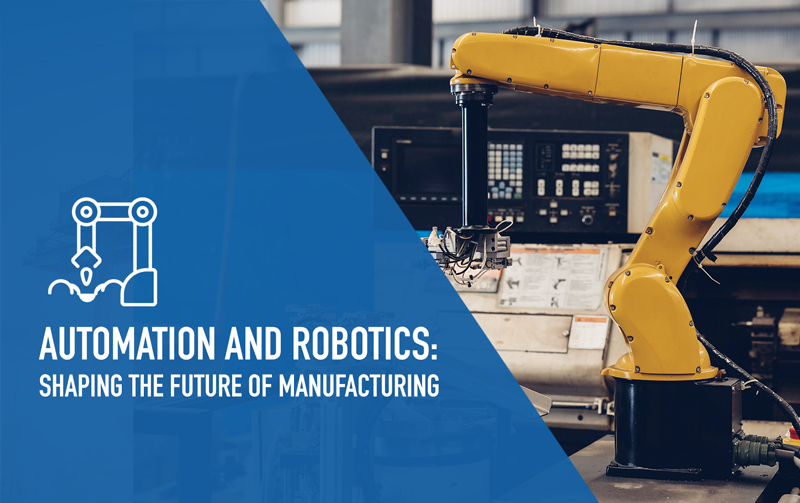Imagine a world where cars drive themselves, surgeries are performed by robots, and your daily chores are handled by machines. This isn’t science fiction; it’s the future we are rapidly moving toward. Robotics and automation have become integral parts of our lives, transforming the way we work, live, and interact with technology.
In this blog post, we’ll take you on a journey into the realm of robotics and automation, exploring their evolution, current applications, and the potential they hold for shaping the future.
What is Robotics and Automation?
Robotics is the branch of technology that deals with the design, construction, operation, and use of robots. A robot is a machine capable of carrying out tasks autonomously or semi-autonomously, often programmable and capable of interacting with its environment. Robotics encompasses a wide range of machines, from simple industrial arms to complex humanoid robots.
Automation, on the other hand, refers to the use of technology and control systems to reduce the need for human intervention in processes and tasks. Automation can be found in various aspects of our daily lives, from automatic coffee makers to advanced industrial assembly lines.
The Evolution of Robotics and Automation
To understand the impact of robotics and automation on the present and future, it’s essential to trace their evolution. Here are key milestones in their development:
Early Beginnings
The concept of automating tasks dates back centuries, with inventors like Leonardo da Vinci designing automated machines. However, the true birth of automation came during the Industrial Revolution, with the introduction of machines that could perform repetitive tasks.
The Rise of Robotics
The term “robot” was first coined in 1920 by Czech writer Karel Čapek in his play “R.U.R.” (Rossum’s Universal Robots). The play explored the idea of artificial beings created to serve humans, setting the stage for the modern concept of robots.
Industrial Revolution 4.0
The fourth industrial revolution, often referred to as Industry 4.0, marked a significant shift in the integration of automation and robotics. This era is characterized by the fusion of digital technologies, artificial intelligence, and the Internet of Things (IoT) to create smart factories and processes.
Current Landscape
Today, robotics and automation are prevalent in various industries. Manufacturing plants use robotic arms for precision assembly, while logistics companies employ automated drones and self-driving vehicles. Healthcare has seen the emergence of surgical robots, and even our homes are becoming smarter with the adoption of home automation systems.
Applications of Robotics and Automation
The applications of robotics and automation are vast and continually expanding. Here are some key areas where these technologies are making a significant impact:
Manufacturing and Industry
One of the earliest and most prominent uses of automation is in manufacturing. Robots have transformed assembly lines, increasing efficiency and precision while reducing costs. These machines are capable of performing tasks 24/7 without fatigue, making them indispensable in industries like automotive, electronics, and aerospace.
Healthcare
Robotic surgery has revolutionized the medical field, enabling minimally invasive procedures with pinpoint accuracy. Surgeons can now perform complex operations with the assistance of robotic arms, leading to quicker recovery times and reduced patient trauma.
Agriculture
Automation is changing the face of agriculture, with the introduction of autonomous tractors, drones for crop monitoring, and robotic harvesting systems. These innovations are increasing crop yields, reducing the need for manual labor, and making farming more efficient and sustainable.
Logistics and Transportation
From self-driving cars and trucks to delivery drones, automation is reshaping the logistics and transportation industry. These technologies promise safer and more efficient transportation systems, potentially reducing accidents and traffic congestion.
Home and Lifestyle
Home automation systems are becoming increasingly popular, allowing homeowners to control lighting, security, and climate with the touch of a button or a voice command. Smart devices like virtual assistants and robotic vacuum cleaners are becoming commonplace in households worldwide.
The Future of Robotics and Automation
As we look ahead, it’s evident that robotics and automation will continue to play a pivotal role in shaping our future. Here are some key trends and possibilities on the horizon:
- Artificial Intelligence Integration
The synergy between artificial intelligence (AI) and robotics will lead to machines that can learn, adapt, and make decisions independently. This will enhance their ability to perform complex tasks and interact seamlessly with humans. - Increased Accessibility
Robotic technology will become more affordable and accessible, leading to its integration into smaller businesses and everyday life. This democratization of robotics will open up new opportunities and applications. - Healthcare Advancements
Medical robotics will advance further, enabling remote surgeries and diagnostics. Telemedicine and robotic-assisted healthcare will improve access to medical services globally. - Sustainability
Automation will play a crucial role in achieving sustainability goals. In agriculture, precision farming will reduce resource wastage, while in manufacturing, energy-efficient processes will become the norm. - Ethical Considerations
As robotics and AI become more integrated into our lives, ethical questions will arise regarding job displacement, privacy, and the use of autonomous weapons. Society will need to grapple with these complex issues.
Conclusion
Robotics and automation are no longer the stuff of science fiction but integral components of our present and future. From revolutionizing industries to enhancing our daily lives, these technologies continue to shape the world around us. As we embrace the promises and challenges they bring, it’s essential to navigate this transformative journey with a clear understanding of their potential and ethical implications. The future is automated, and it’s up to us to ensure it’s a future that benefits all of humanity.


